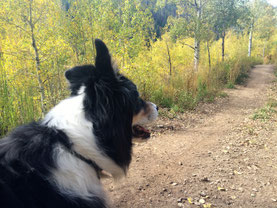Imagine you are a highly competitive trail runner, and today is race day. Here is the caveat: you must run the entire race with just a tiny pebble in your shoe. Almost immediately, the pebble lodges under the ball of your foot, and each time your foot strikes the ground, you notice a subtle discomfort.
After a mile, you begin to shorten your stride to lessen the concussion on the ball of your foot. After another mile your flexor muscles engage to hold your toes up so your weight is taken primarily on your heal. Your flexors begin to ache with fatigue, and after another mile your lower back hurts. Your pelvis is now rotated to compensate for your uneven gait. After another mile you pull out of the race because you are painful, slow, and exhausted.
If this were to continue for months to years, you would develop areas of abnormally enlarged muscles and areas of muscle atrophy. This asymmetry could lead to joint instability followed by inflammation and arthritis. Not only did this pebble end your race, it ended your career.
The effects are profound, and the domino kicking off the cascade of events was a subtle, tiny pebble.
Do our animals have "pebbles in their shoes?"

Our dogs run and hike with us without the opportunity to tell us they may have “pebbles in their shoes.” Many times, we won’t know to start looking for the pebble until the arthritis stage sets in – years after the first domino fell.
What if we could learn to identify the early signs of a pebble and correct the compensations? Could our dogs enjoy more time happily hiking by our sides?
seeing through new eyes
Last week I had the privilege of being a coach in CuraCore’s Medical Acupuncture for Veterinarians certification course. All the students were veterinarians, and many had years of experience under their belts. Regardless of experience, last week they were seeing the animals’ bodies from the perspective of acupuncture for the first time. I could have wiped the pooling drool off the floor from so many dropped jaws – from the veterinarians, that is.
In this forum, I was reminded of the profound power in subtlety. Subtle asymmetries in an animal’s gait often go unnoticed. Subtle changes in muscle tone or tenderness are seldom identified. Shifts in posture happen so slowly they may be considered normal. These subtle changes lead to profound pathologies that end our dogs’ hiking days too soon.
As an acupuncture coach in this course, however, I was teaching students to identify subtlety and treat subtly. One of our patients was a 12-year-old Lab named Huck. In learning to see through new eyes, one student noticed Huck had a rotated pelvis and sat crookedly. His pelvis rotated to the right and his left leg splayed out to the side. She also identified tiny trigger points in his lumbar back musculature.
Subtle.
This was the first time the student, a veterinarian with 20 years of experience, identified these clues. Astonishment was evident on her face when Huck’s posture began to change after only 15 tiny acupuncture needles, 20 minutes, massage and laser therapy. By the end of the treatment, Huck sat squarely.
inspired by teaching
We took a tiny pebble out of Huck’s shoe, so to speak, and we stopped the dominos.
Helping to teach veterinarians to see with sharpened eyes and feel with sensitive fingers was an inspiring reminder. By identifying and treating subtle pain in our 4-legged friends we not only improve the lives of the animals, but we also touch the people who love them.
Powerful.

Write a comment